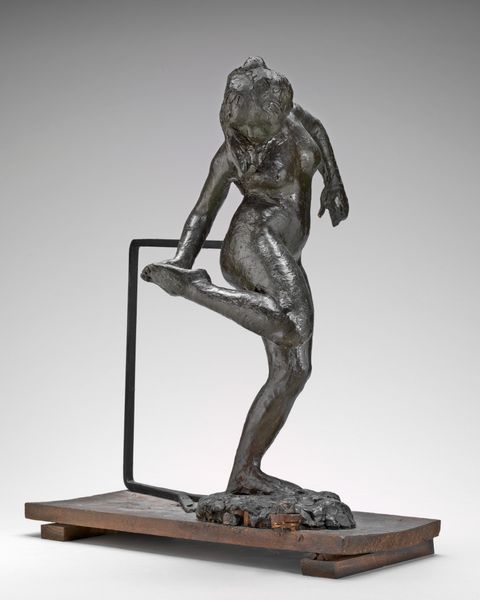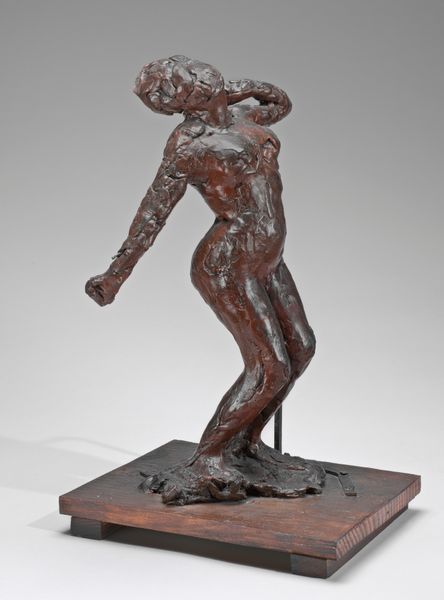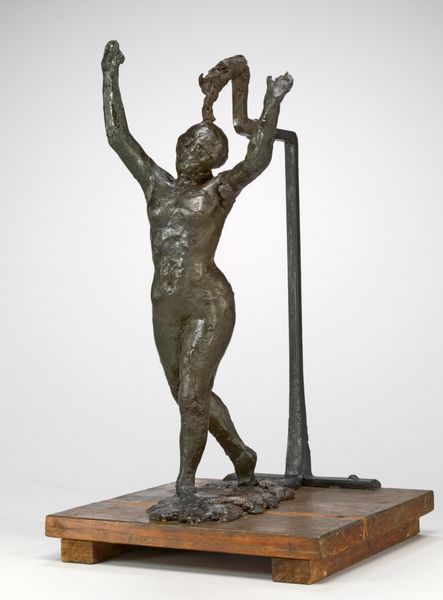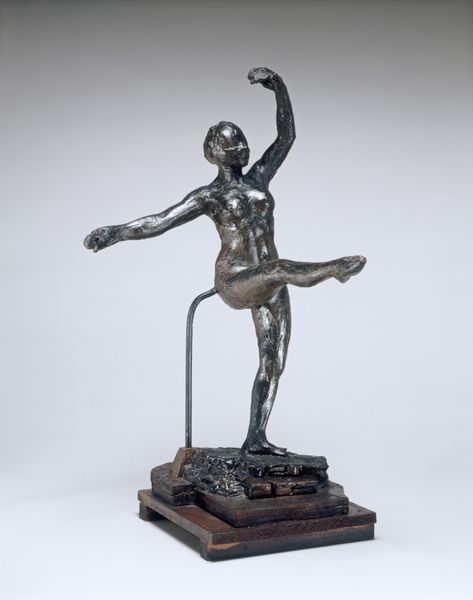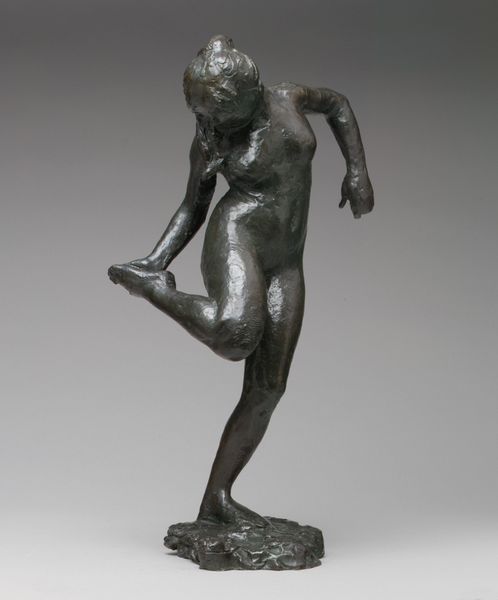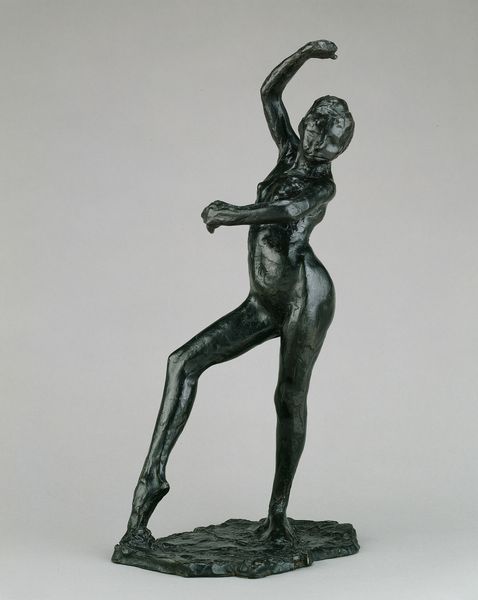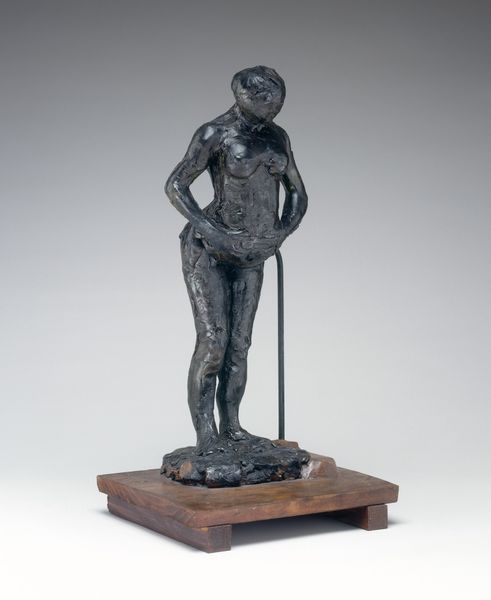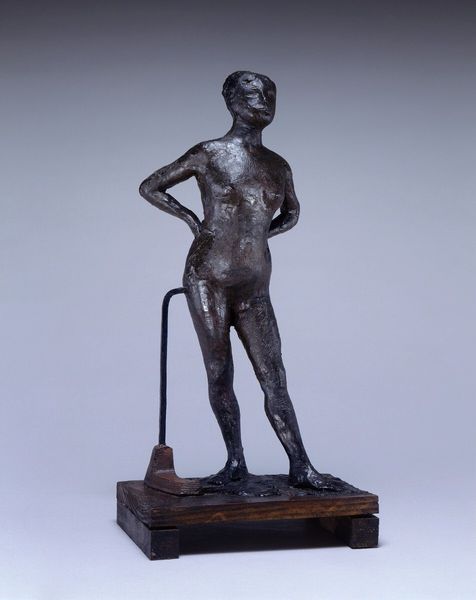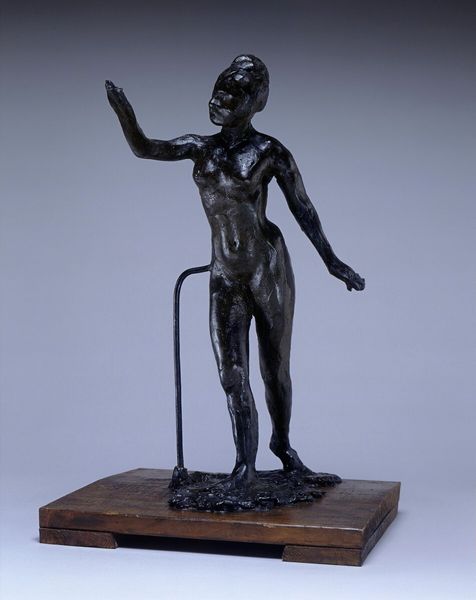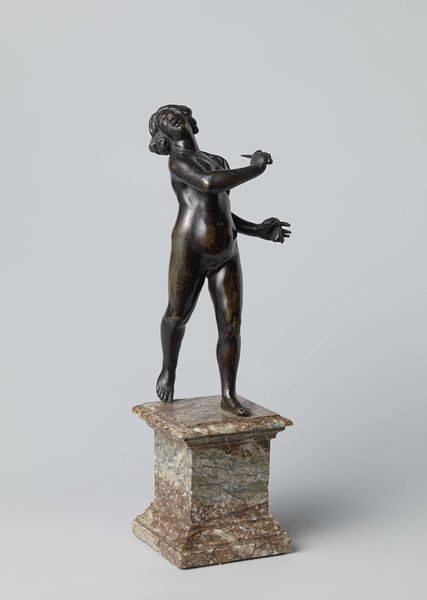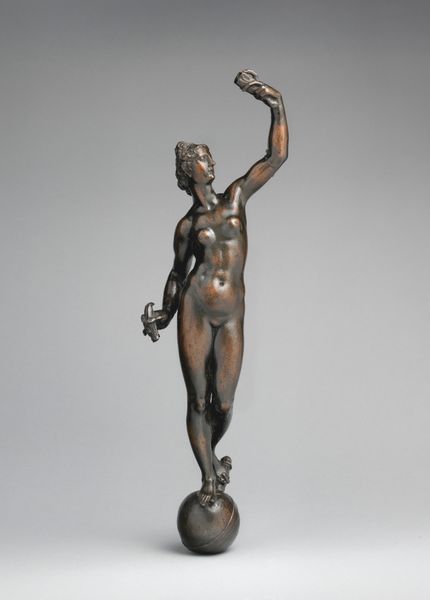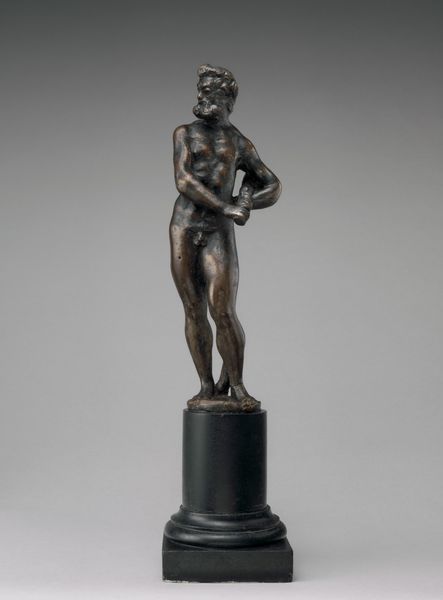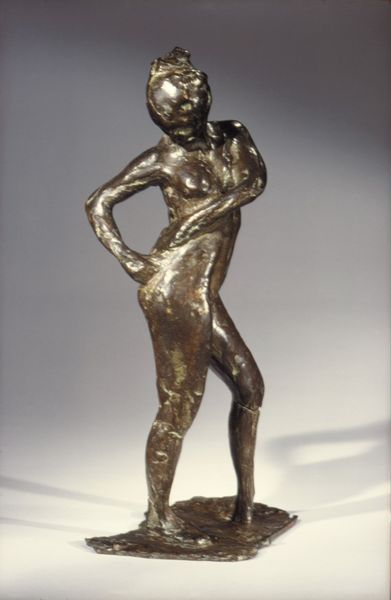
bronze, sculpture
#
impressionism
#
sculpture
#
bronze
#
figuration
#
sculpture
#
nude
Dimensions: overall without base: 44.6 x 12.2 x 22 cm (17 9/16 x 4 13/16 x 8 11/16 in.) height (of figure): 43.1 cm (16 15/16 in.)
Copyright: National Gallery of Art: CC0 1.0
Curator: This captivating bronze sculpture is "Spanish Dance" by Edgar Degas, crafted around the 1880s. It presents a figure caught in a moment of dynamic, raw expression. Editor: My initial impression is of pent-up energy, like a coiled spring ready to unfurl. The way the light plays across the bronze creates an intriguing contrast between vulnerability and strength. The positioning is everything here. Curator: Absolutely. Degas often explored themes of movement and performance, particularly focusing on dancers. While most remember him for the ballet, here the focus shifts to the passions of Spanish dance. He captures not just a pose, but the vibrant feeling and ethos of the art. It pulses, no? Editor: I see it. The nude form speaks volumes. Stripped bare, the dancer’s identity is distilled into pure expression. The gesture, that arched back and raised arm, evokes a tradition rich with pride, pain, and a sort of defiance. What is also curious is the strange little "appendage," the dark and odd staff that comes out of her left side; does this evoke something, some external and dark supporting feature for her, literally a 'dark side'? Curator: The use of the nude indeed removes any societal costume. She's pure movement and form. The Impressionists frequently looked to raw honesty, eschewing the hyper-idealism that came before. And I'm glad you see her like that because there is a hidden feature about the form, namely, this wasn't supposed to be viewed! Editor: What do you mean? Curator: Many believe it to be the armature of the clay figure. Degas never displayed his sculptural work. It remained an open secret, almost shamefully kept locked away as sketches were far more the social mode. In that way, the rawness, the strange and oddly unbalanced look to it, even, it being bare -- it all speaks of its being an image we "shouldn't see"! Editor: Well, there's something profoundly arresting about that, the unveiling of process, of a deeply intimate form of working. We have caught Degas undressing what society permits from art, it feels revolutionary and still very much modern in feeling. I see how Impressionism embraces immediacy and transient feeling but in a more materialist way. What do you take from it? Curator: For me, "Spanish Dance" is like a captured moment, an invitation into a dialogue between art and body and a conversation across what it means for tradition to give way to new understandings, always caught up within each one's subjective emotion. In the quiet spaces of bronze and form, you might encounter echoes of yourself.
Comments
No comments
Be the first to comment and join the conversation on the ultimate creative platform.

